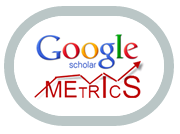FROM LOCAL DIALECTS TO GLOBAL UNDERSTANDING: THE ROLE OF LINGUISTIC UNIVERSALS IN INTERNATIONAL COMMUNICATION
Resumo
Objective: This study aims to explore the concept of linguistic universals and their role in international communication. The research focuses on analyzing and categorizing the principal linguistic universals, leading to a comprehensive classification.
Methods: Various linguistic and general scientific methodologies were employed in the research, including descriptive, comparative, structural, typological, and distributional analysis, along with synthesis. These methods were used to examine the universals across different languages, considering both synchronic and diachronic perspectives.
Results: The study identified several types of linguistic universals, such as diachronic, synchronic, absolute, statistical, implicative, deductive, and inductive. These universals demonstrate shared principles underlying the structure of various human languages and contribute to their mutual intelligibility. The findings highlight the importance of linguistic universals in understanding language structure and evolution.
Conclusions: The research underscores the significance of linguistic universals in facilitating global understanding and communication. It suggests that further scientific inquiry should focus on refining systemic and integrated approaches to address the challenges within linguistic universology. Understanding these universals not only enhances the comprehension of language structures but also provides insights into the historical development of languages.
Palavras-chave
Texto completo:
PDF (English)Referências
Barbieri, M. (2020). The semantic theory of language. Biosystems, 190, 104100. https://doi.org/10.1016/j.biosystems.2020.104100
Buht, W., & Aginsky, E.G. (1948). The importance of language universals. WORD, 4(3), 168-172. https://doi.org/10.1080/00437956.1948.11659339
Carr, J.W., Smith, K., Culbertson, J., & Kirby, S. (2020). Simplicity and informativeness in semantic category systems. Cognition, 202, 104289. https://doi.org/10.1016/j.cognition.2020.104289
Farese, G.M. (2018). Is know a semantic universal? Shiru, wakaru and Japanese ethno-epistemology. Language Sciences, 66, 135-150. http://dx.doi.org/10.1016/j.langsci.2017.09.001
Goddard, C., & Wierzbicka, A. (2002). Meaning and universal grammar. Amsterdam: John Benjamins Publishing Co.
Greenberg, J.H. (Ed.). (1963). Universals of language: Report of a conference held at Dobbs Ferry, New York, April 13-15, 1961. Cambridge: MIT Press.
Hinzen, W. (2012). The philosophical significance of Universal Grammar. Language Sciences, 34(5), 635-649. http://dx.doi.org/10.1016/j.langsci.2012.03.005
Kang, K.D. (2018). Language and ideology: Althusser's theory of ideology. Language Sciences, 70, 68-81. http://dx.doi.org/10.1016/j.langsci.2018.06.008
Kartushina, N.V. (2022). Sistema otsenki professional'noy deyatel'nosti prepodavatelya inostrannogo yazyka v universitete [The system of evaluation of professional activity of a foreign language teacher at the university]: dis. … cand. Ped. Sci. Institute of Education Development Strategy of the Russian Academy of Education, Moscow, 226 p.
Lemanek, K. (2020). Issues with molecules in Natural Semantic Metalanguage. Language Sciences, 77, 101239. http://dx.doi.org/10.1016/j.langsci.2019.101239
Levinson, S.C., & Evans, N. (2010). Time for a sea-change in linguistics: Response to comments on ‘The Myth of Language Universals’. Lingua, 120(12), 2733-2758. http://dx.doi.org/10.1016/j.lingua.2010.08.001
Lobben, M., Bochynska, A., Tanggaard, S., & Laeng, B. (2020). Classifiers in non-European languages and semantic impairments in western neurological patients have a common cognitive structure. Lingua, 245, 102929. http://dx.doi.org/10.1016/j.lingua.2020.102929
Lysenko, S.V. (2019). Istoriya angliĭskogo yazyka. Brevissima Institutio [History of the English language. Brevissima Institutio]. Moscow: Serebro Slov, 52 p.
Mechkovskaya, N. (1995). Obshcheye yazykoznaniye. Struktura yazyka. Tipologiya yazykov i lingvistika universaliy [General linguistics: The structure of language. Typology of languages and linguistics of universals]. Minsk: Vysheyshaya shkola.
Pablé, A. (2020). Integrating linguistic relativity. Language & Communication, 75, 94-102. http://dx.doi.org/10.1016/j.langcom.2020.09.003
Ryabkova, G.V., & Ovsyannikova, M.N. (2022). Istoriya razvitiya angliyskogo yazyka [The history of the development of the English language]. Sovremennaya nauka: Aktual'nyye problemy teorii i praktiki. Seriya: Gumanitarnyye nauki, 02/2, 189-191.
Steinert-Threlkeld, Sh., & Szymanik, J. (2020). Ease of learning explains semantic universals. Cognition, 195, 104076. https://doi.org/10.1016/j.cognition.2019.104076
Ushakin, S. (Ed.). (2016). Formal'nyy metod: Antologiya russkogo modernizma [Formal method: Anthology of Russian modernism. Moscow; Yekaterinburg: Kabinetnyy uchonyy.
van Rijt, J.H.M., de Swart, P.J.F., Wijnands, A., & Coppen, P.-A.J.M. (2019). When students tackle grammatical problems: Exploring linguistic reasoning with linguistic metaconcepts in L1 grammar education. Linguistics and Education, 52, 78-88. http://dx.doi.org/10.1016/j.linged.2019.06.004
Vardul, I.F. (1977). Osnovy opisatel'noy lingvistiki [Foundations of descriptive linguistics]. Moscow: Nauka.
Vendryes, J. (1951). Language: A linguistic introduction to history. New York: Barnes & Noble.
Yang, Ch., Crain, S., Berwick, R.C., Chomsky, N., & Bolhuis, J.J. (2017). The growth of language: Universal Grammar, experience, and principles of computation. Neuroscience & Biobehavioral Reviews, 81(Part B), 103-119. https://doi.org/10.1016/j.neubiorev.2016.12.023
DOI: http://dx.doi.org/10.21902/Revrima.v2i44.6730
Apontamentos
- Não há apontamentos.
Revista Relações Internacionais do Mundo Atual e-ISSN: 2316-2880
Rua Chile, 1678, Rebouças, Curitiba/PR (Brasil). CEP 80.220-181



